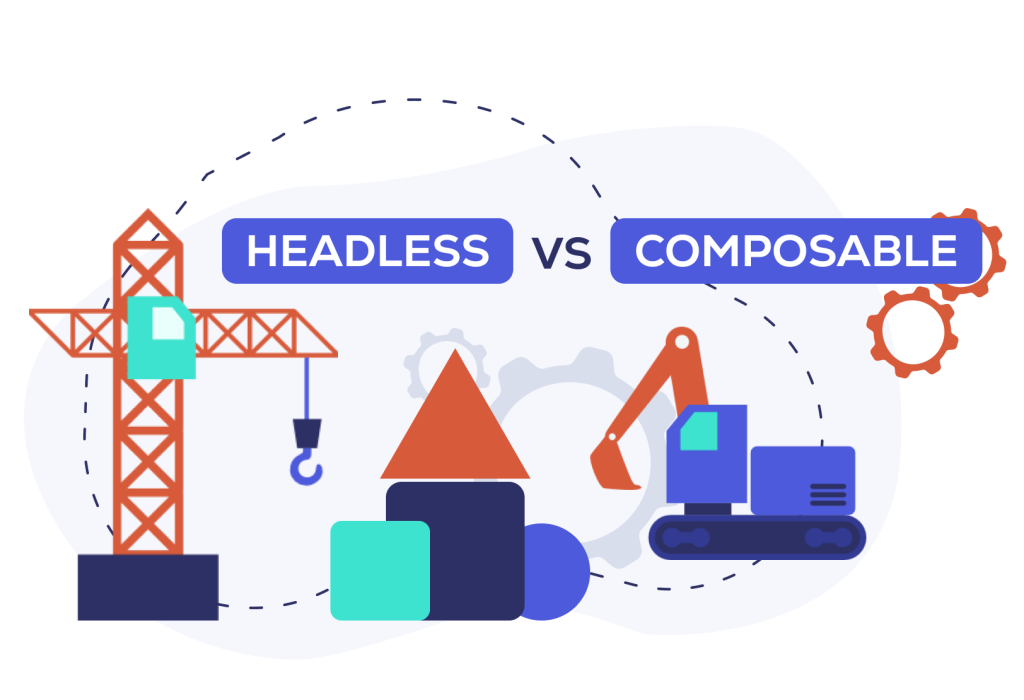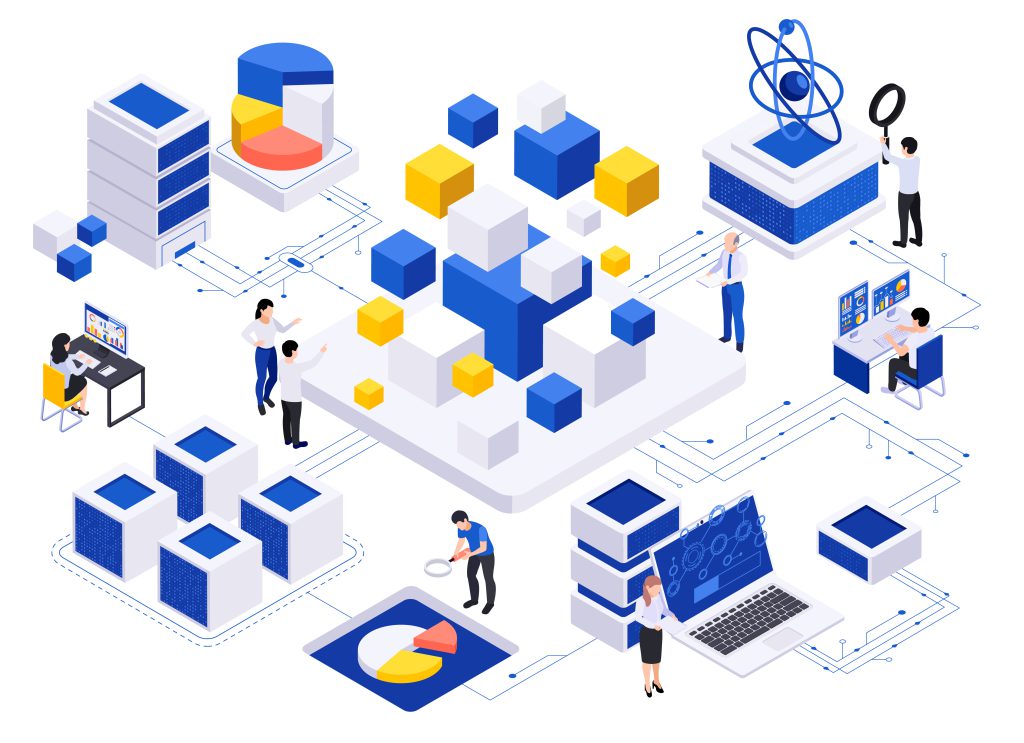Headless vs. Composable Commerce: Unraveling the Key Differences
As E-commerce evolves, businesses seek flexible, scalable solutions to enhance their online presence, swapping their traditional monolithic platforms.
While both headless and composable commerce satisfy these requirements of online retailers, there are still distinct differences between the two, since:
- headless commerce primarily focuses on separating the front from the backend, while
- composable commerce takes a more granular approach by breaking down the entire E-commerce stack into composable components for greater flexibility and agility in assembling tailored solutions.

Headless Commerce: Flexibility and Performance
Headless solutions decouple the front-end (presentation layer) from the back-end (commerce functionality). This separation allows businesses to use any front-end technology to deliver content, leading to highly customized user experiences and customer journeys across different channels like their website or mobile app. Check out some of the most popular headless platforms.
Benefits of Headless Commerce Solutions
- Enhanced Customization: With no fixed front-end, businesses can create unique user interfaces tailored to their brand and customer demands.
- Improved Performance: Front-end changes can be made independently of back-end updates, ensuring faster load times and smoother user interactions. The front-end system is more scalable with this approach.
- Seamless Integrations: APIs facilitate integration with various third-party services, enabling businesses to add functionalities without overhauling the entire system.
- Predictable costs: while it might be more cost-intensive to get started with headless commerce architecture, the associated costs are more stable and predictable over the long-run.
Challenges of Headless Commerce Architectures
- Complex and Custom Development: Requires more sophisticated development skills to manage and integrate different components. This can also lead to higher overall maintenance costs.
- Higher Initial Costs: The need for custom front-end development can result in higher initial investments.
- Security and Performance Issues: managing multiple systems and APIs can lead to more risk exposure and if not properly optimized, your site can suffer from latency issues.
Composable Commerce: Modular and Agile
Composable approach takes headless commerce platforms a step further by allowing businesses to select and assemble best-of-breed commerce components (so called Packaged Business Capabilities – PBCs) to create a tailored ecosystem.
Packaged Business Capabilities (PBCs) are modular software components (a collection of microservices) that encapsulate specific business functions. Each PBC operates independently, enabling rapid innovation and customization, as companies can easily add, replace, or update individual capabilities without affecting the overall system.
PBCs and microservices a preferred over a monolithic architecture where everything is written in a single piece of code as microservices act like puzzle pieces where each section is responsible for 1 area.

Benefits of Composable Commerce Platforms
- Unmatched Flexibility: E-commerce businesses can choose specific components for functions like checkout and search, optimizing their technology stack and improving the overall customer experience. This lets you easily adapt your E-commerce set-up to your business’ unique needs.
- Rapid Innovation: Components can be easily added, replaced, or updated, allowing businesses to quickly adapt to market changes and add new technologies with this modular approach.
- Cost Efficiency: The pay-as-you-go business model enables E-commerce retailers to invest only in necessary components, reducing waste and optimizing budget use. It also removes the need to have a large development team as you don’t need to frequently make back-end changes.
Challenges of Composable Commerce Solutions
- Integration Complexity: Managing multiple vendors and ensuring compatibility between components can be challenging.
- Ongoing Maintenance: Each component may have its own update cycle, requiring continuous attention to maintain a seamless operation.
Key Differences between Composable and Headless Commerce
To wrap up, these are the key areas where the two technologies are most distinct:
- Scope of Modularity: While headless commerce focuses on separating front-end and back-end, composable commerce architecture involves selecting various independent components to build a complete system.
- Flexibility: Composable architectures offer greater flexibility with their modular approach, allowing online businesses to customize every aspect of their E-commerce solution.
- Implementation and Maintenance: Composable commerce platforms may require more extensive planning and integration efforts due to the variety of components involved, whereas headless commerce solutions primarily deal with front-end and back-end separation.
Summary
Choosing between headless and composable commerce solutions depends on your business needs, technical capabilities, and long-term goals. Headless architectures provide a robust foundation for custom front-end development, while composable commerce offers unparalleled flexibility and adaptability through its modular architecture. Both approaches can significantly enhance your E-commerce capabilities, ensuring a seamless, high-performing, and innovative online shopping experience.
For more in-depth insights, visit check out our separate detailed guides on headless commerce and composable commerce.


